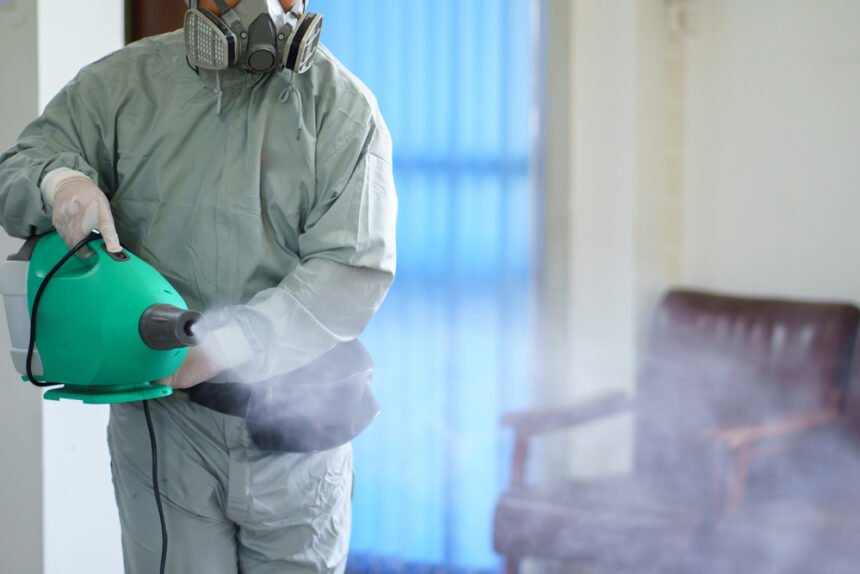While the threat of COVID-19 continues to grip the nation, many people are now being extra cautious about their hygiene and overall cleanliness. Gone are the days when they met with other people and openly shook hands, offered an embrace, or puckered up to kiss. Today, most greetings would be limited to nodding the head. Handshakes have become a rarity, and, if ever, each handshake would then be followed by disinfection with alcohol or sanitizers. We’ve entered an era where disinfection has become a must. In this post, we’ll look at the latest innovations that will help more people to cope with the new normal – the disinfection era, especially in the healthcare setting.
The Disinfection Industry
Even before the introduction of COVID-19, many establishments – including hospitals and medical clinics – had disinfection processes. For example, before a surgeon can operate on a patient, they have to make sure that the operating room is sanitized and disinfected. All the tools that would be used to operate on a patient need to be thoroughly cleaned and autoclaved to make sure each one does not carry any bacteria or viruses that can make the patient sick. Even the surgeons and nurses need to clean and brush their hands and wear surgical scrubs, hair nets, masks, and gloves. Disinfection has been a common practice in the healthcare industry. Now, however, it is an entirely different story. The disinfection process is no longer just exclusive to hospitals and medical clinics. Disinfection has become the new normal for most establishments, particularly those who want to continue serving their clients.
Here are some of the different methods of disinfection currently available on the market:
Disinfecting Mats
People are extremely mobile, and they can go to places where they are at risk of contracting a deadly disease. Since the Centers for Disease Control and Prevention (CDC) reported that the COVID-19 virus could be transmitted from the soles of the shoes, many establishments have made it a point to include disinfection mats as part of their sanitation protocols. These mats may be simple but can be useful in preventing the spread of the disease since it allows people to soak their shoes and slippers onto a carpet filled with disinfecting solution.
Disinfection Stations
Many establishments with high volumes of people have now installed sanitation stations where people can disinfect themselves. In the past, many used misting stations but these have been removed because they turned out to be ineffective at best and cause more health problems at worst. Now, hygiene stations have alcohol-based sanitizers where people can clean themselves after touching surfaces. The idea is to clean off the particles of the virus. In some stations, these areas have a built-in scanner or thermometers to check whether a person has a fever or not.
Disinfection Tunnels
The impact of the coronavirus is not limited to the healthcare industry. The global economy is suffering as well since most people need to follow stay at home orders. However, this won’t be forever. People will soon start going out and adapting to the new normal. Since there will be increased movement, some places have now installed disinfection tunnels where people can pass by and rid (hopefully) themselves of the virus before going home.
Automated Disinfection
While disinfection methods have been part of the medical care industry long before the discovery of the SARS-CoV-2 virus, it needs to evolve. And this is made possible by embracing technological innovations. There is no denying that we live in a world where most processes have become automated. One of the innovations that are gaining widespread adoption is automated disinfection. You can find many hospitals and medical clinics installing automatic air purifiers.
UV Disinfection
One notable medical tech company that also promotes UV disinfection is Sterifre Medical by providing improved sanitation practices and caring for the well-being of healthcare workers. With this technology, healthcare workers will never have to worry about handling things that contain viruses, especially coronavirus, which could live on surfaces for several days. The market is now also rife with several stores selling UV wands, claiming to clean surfaces by exposing them to UV rays.
UV light disinfection is becoming increasingly popular in the medical industry, especially in hospitals and other healthcare facilities. With the ongoing threat of infectious diseases, it is critical for healthcare workers to have access to effective disinfection tools to keep themselves and their patients safe. Hospital UV light disinfection technology has been proven to be highly effective in eliminating harmful pathogens, including viruses like coronavirus, from surfaces in medical settings. While there are UV wands available in the market claiming to disinfect surfaces, it is important to note that these may not be as effective as hospital-grade UV light disinfection equipment, which is specifically designed to meet the unique needs of healthcare facilities. By utilizing this technology, healthcare workers can have peace of mind knowing that they are working in a clean and safe environment, which is critical to providing high-quality patient care.
Chlorination
Another most commonly used disinfection method is chlorination. Most hospitals use this process to ensure that surfaces no longer host the coronavirus. Some people are now using chlorine mixed with water to disinfect the food items they bought from the grocery store.
While these disinfection procedures are effective in killing microorganisms such as COVID-19, the best defense is still to wash hands thoroughly, practice physical distancing, and stay at home whenever necessary. Limiting your exposure can help the exhausted healthcare industry cope with the growing number of coronavirus cases. Do your share by wearing your mask and staying at home as much as possible.

